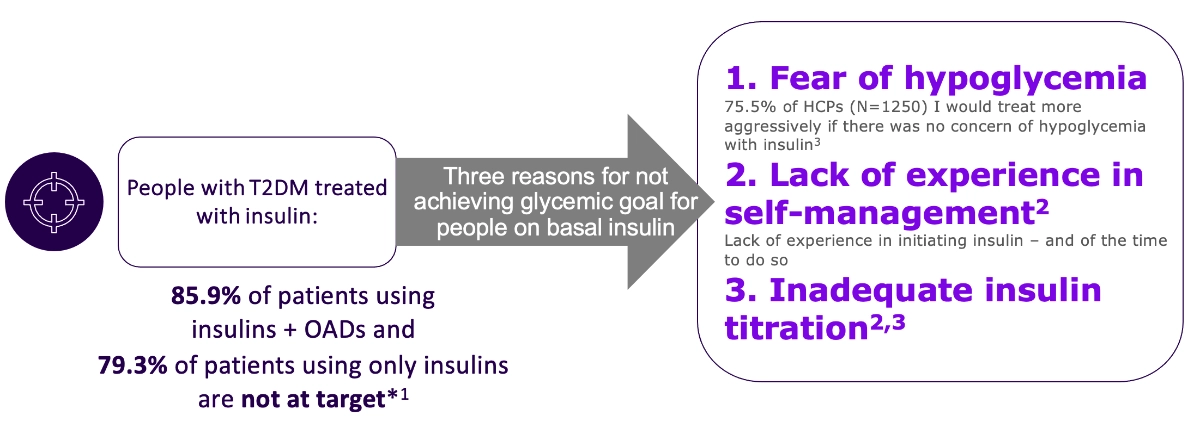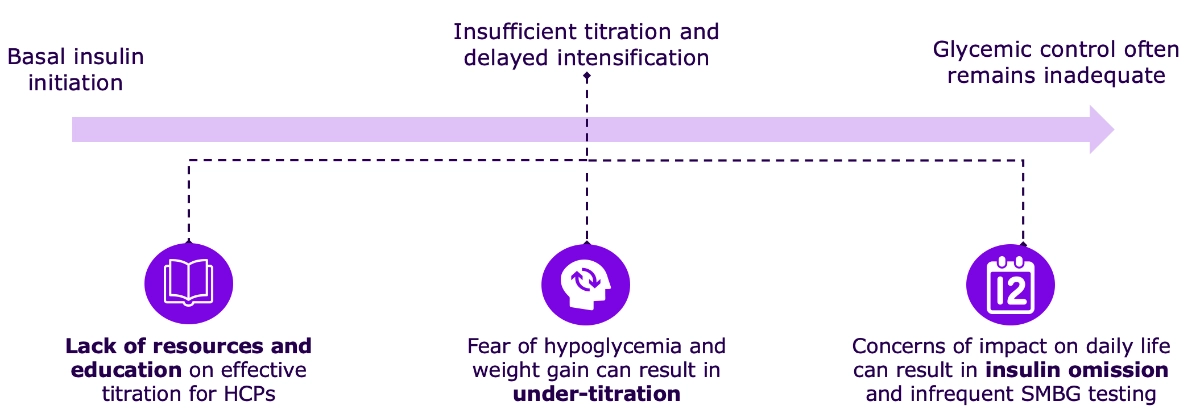- Article
- Source: Campus Sanofi
- May 19, 2025
Titration Inertia; A Predominant Issue for People with Diabetes
_430x268.jpg)
Low number of people with diabetes, using insulin, are achieving glycemic control

*Target HbA1c <7%; The IDMPS (N=1936) was a large, observational study program, collating data in seven individual waves from 2005 to 2017. The data from wave 7 (2016–2017) describing real-world acheivement of glycemic targets was reported in this study HCPs, Healthcare practitioners; OADs, oral antidiabetic drugs; T2DM, type 2 diabetes mellitus
-
Aschner P. et al. ADA 78th Scientific Sessions 2018; 1656-P Dalal M, et al. Adv Ther. 2017;34:2083–92
-
Russell-Jones D, et al. Diabetes Obes Metab. 2018;20:488–96
Once basal insulin has been initiated, titration inertia can become a predominant issue for people with diabetes

Real-world evidence indicates that the structured and monitored titration algorithms that are applied in randomized controlled trials are not reflective of behavior in practice
-
SMBG, self-measured blood glucose. Russell-Jones D, et al. Diabetes Obes Metab 2018;20:488–96.
Fear of hypoglycemia is a major barrier to insulin initiation and optimal insulin titration
Careful titration of insulin therapy can achieve glycemic control without a significant risk of hypoglycemia1; however, in clinical practice, fear of hypoglycemia is a common barrier to optimal titration, concordance and achieving glycemic targets with insulin1–3

-
Ahrén B. Vasc Health Risk Manag 2013;9:155–63;
-
Peyrot M, et al. Diabet Med 2012;29:682–9;
-
Russell-Jones D, et al. Diabetes Obes Metab 2018;20(3):488–96.
Titration is a critical phase for basal insulin, and imperative for success of therapy
Difference in dose usage controlled Clinical Studies reality vs Real Life 45-75% of Basal T2 patients are uncontrolled and below optimal BI dose by as much as 30%.

Contact frequency determines outcome of basal insulin initiation trials.
* Conceptual comparison Swinnen & De Vries, Diabetologia 2009
MAT-SA-2400094/v2/Mar 2024